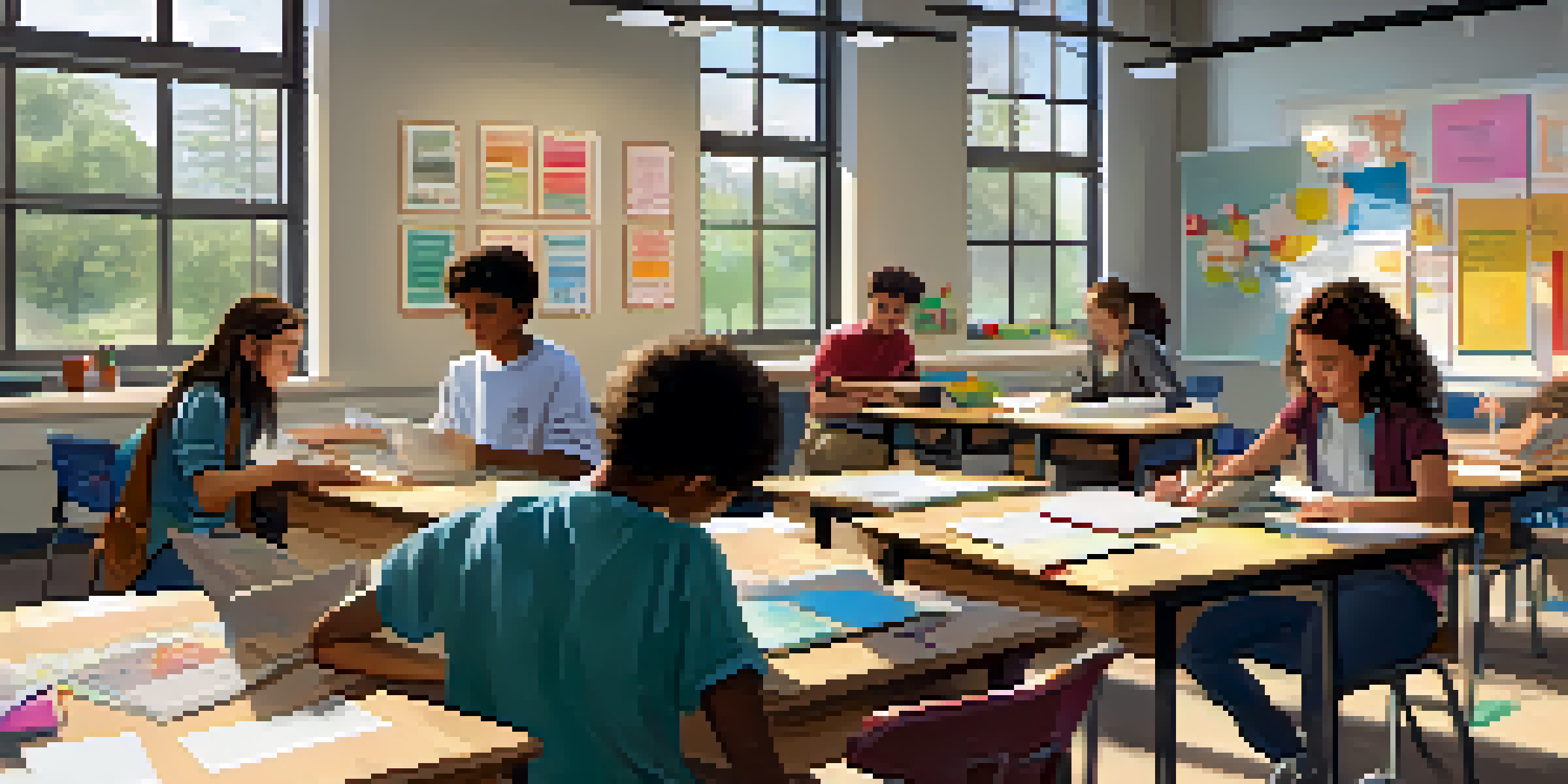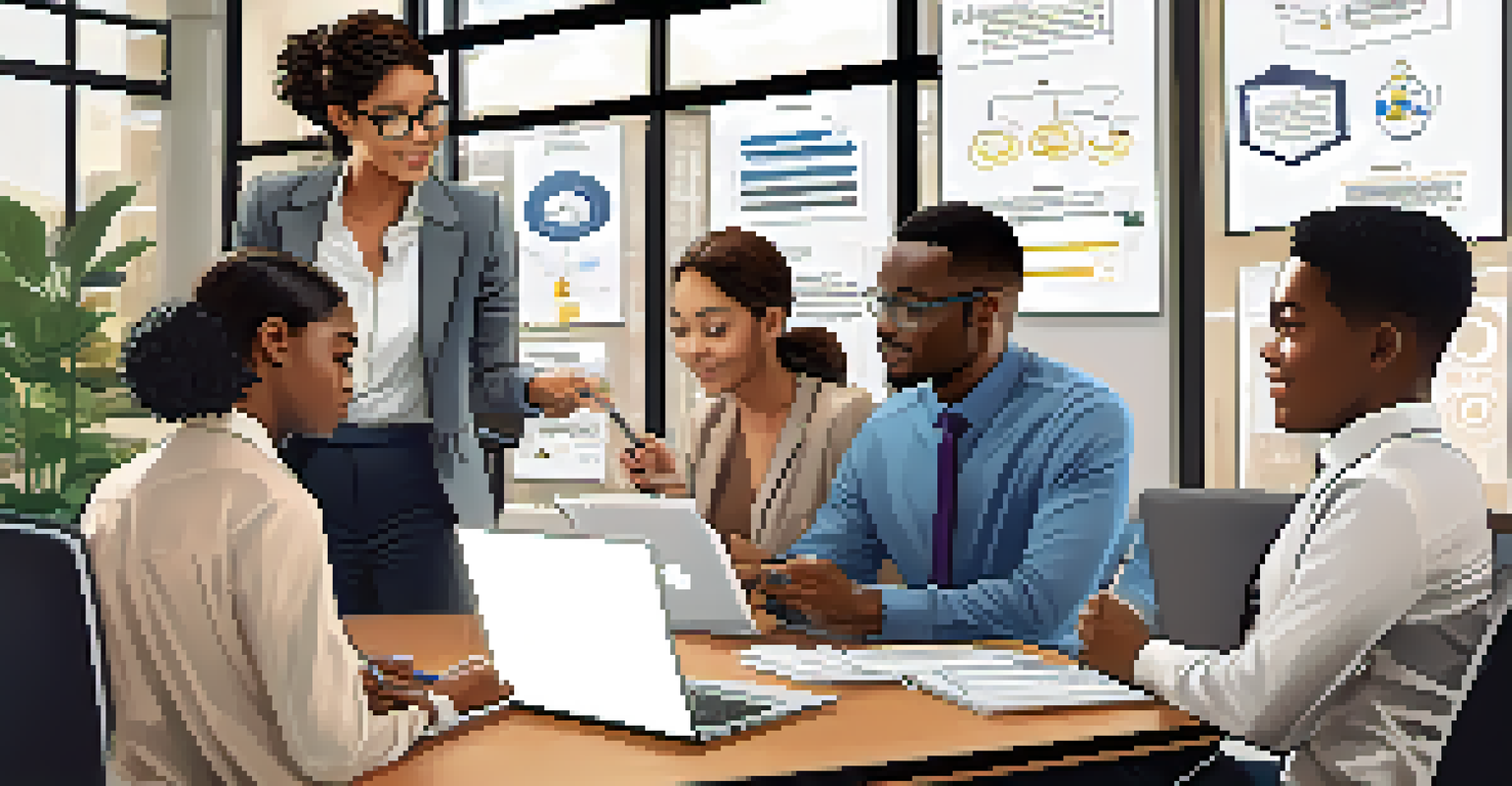Transforming Curriculum: Integrating Real-World Skills

Understanding the Need for Real-World Skills in Education
In today's fast-paced world, the gap between education and the real world is more evident than ever. Students often graduate without the skills necessary to thrive in the workplace. This disconnect highlights the importance of integrating real-world skills into the curriculum, ensuring that learners are prepared for the challenges ahead.
Education is the most powerful weapon which you can use to change the world.
Real-world skills encompass a variety of competencies, from critical thinking and communication to teamwork and adaptability. These are the skills that employers seek, making them essential for students' future success. By embedding these skills into the curriculum, educators can foster a more relevant and engaging learning experience.
Moreover, real-world skills help students see the practical applications of their education. When learners can connect what they study to actual life situations, they are more likely to retain information and remain engaged. This transformation in education leads to a generation of well-rounded individuals ready to tackle real-world problems.
Identifying Key Real-World Skills for Curriculum Integration
To effectively integrate real-world skills, we must first identify which skills are most relevant. Skills such as problem-solving, communication, and digital literacy are crucial in nearly every field today. By focusing on these core competencies, educators can ensure that students are equipped to enter a dynamic workforce.

Collaboration is another key skill that should not be overlooked. In a world where teamwork is essential, teaching students how to work effectively in groups can significantly enhance their learning experience. By fostering collaboration, educators can create a classroom environment that mirrors real-world interactions.
Integrating Real-World Skills
Embedding real-world skills like communication and problem-solving into education is vital for preparing students for future careers.
Additionally, financial literacy is becoming increasingly important in our consumer-driven society. By incorporating lessons on budgeting, investing, and understanding credit, educators can prepare students for personal financial success, making them more responsible adults.
Incorporating Project-Based Learning for Real-World Application
Project-based learning (PBL) is a powerful method for integrating real-world skills into the curriculum. By engaging students in hands-on projects, educators can provide opportunities for practical application of their skills. This approach not only enhances learning but also fosters creativity and innovation.
The future belongs to those who believe in the beauty of their dreams.
For example, a project that requires students to develop a business plan can help them master skills like market research, budgeting, and presentation. Such projects simulate real-life scenarios, allowing students to practice and refine their skills in a supportive environment. This experiential learning solidifies their understanding and boosts confidence.
Moreover, PBL encourages collaboration among students, as they often work in teams to achieve a common goal. This mirrors the collaborative nature of many workplaces today. By integrating PBL into the curriculum, educators can create a dynamic learning space that prepares students for real-world challenges.
Utilizing Technology to Enhance Learning Experiences
Incorporating technology into the curriculum can significantly enhance the learning experience. Digital tools not only make lessons more engaging but also prepare students for a tech-driven workforce. By integrating platforms like online collaboration tools and educational apps, educators can foster digital literacy among their students.
For instance, using video conferencing software for group projects teaches students how to communicate effectively in virtual environments. This skill is increasingly important as remote work becomes more common. By equipping students with these technological skills, educators can ensure they are well-prepared for the modern workplace.
Project-Based Learning Benefits
Project-based learning engages students in hands-on experiences that enhance their understanding and application of real-world skills.
Additionally, technology enables personalized learning experiences. Students can work at their own pace, accessing resources that cater to their individual learning styles. This flexibility ensures that all learners can thrive, ultimately leading to a more inclusive educational environment.
Creating Partnerships with Local Businesses and Organizations
Building partnerships with local businesses can provide invaluable resources for curriculum development. These collaborations can lead to internships, mentorship programs, and real-world projects that enhance student learning. By connecting with the community, educators can create opportunities that bring classroom lessons to life.
For example, a local business might partner with a school to offer students hands-on experience in a specific field, such as marketing or engineering. This not only enriches the curriculum but also helps students build networks and gain insights into potential career paths. Such partnerships can bridge the gap between education and industry.
Furthermore, involving community stakeholders in the educational process fosters a sense of investment in student success. When businesses and organizations support local schools, they contribute to the overall development of the community. This collaboration creates a win-win situation, benefitting both students and local enterprises.
Evaluating the Effectiveness of Integrated Curriculum Approaches
To ensure the success of integrating real-world skills into the curriculum, it's essential to evaluate the effectiveness of these approaches. Regular assessments can help educators understand whether students are developing the necessary competencies. By gathering feedback from students and employers, schools can make informed adjustments to their programs.
For instance, surveys and interviews with students can provide insights into their learning experiences and skill development. Additionally, collaborating with businesses to assess the readiness of graduates can offer a clear picture of the program's impact. This feedback loop is critical for continuous improvement.
Community Partnerships Enhance Learning
Collaborating with local businesses provides students with practical experiences and networking opportunities that bridge the gap between education and industry.
Moreover, performance metrics, such as student engagement and project outcomes, can serve as indicators of success. By analyzing these data points, educators can refine their curriculum to better meet the needs of their students and the demands of the workforce.
Fostering a Growth Mindset in Students for Lifelong Learning
Encouraging a growth mindset in students is crucial for their success, both academically and in their future careers. A growth mindset is the belief that abilities and intelligence can be developed through dedication and hard work. When students embrace this mindset, they are more likely to take risks and learn from failures, which are essential components of real-world skills.
To foster a growth mindset, educators can create a classroom culture that celebrates effort and perseverance. Providing constructive feedback and recognizing improvement can motivate students to push their boundaries. By instilling this mindset, educators empower students to become lifelong learners, ready to adapt to an ever-changing world.

Moreover, incorporating reflection activities can help students recognize their progress and areas for growth. When learners take the time to evaluate their experiences, they gain valuable insights that can guide their future endeavors. Ultimately, promoting a growth mindset prepares students to navigate challenges and seize opportunities throughout their lives.